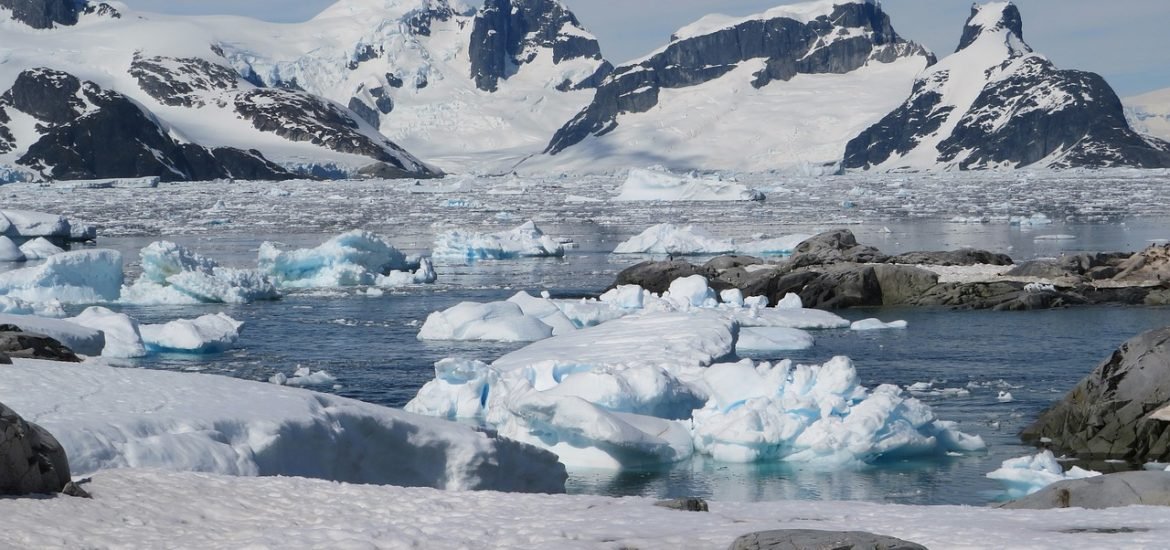
A team of researchers found a new river under the Antarctic, according to a study published in the scientific journal Nature Geoscience. The authors believe this can affect the flow and melting of the ice and even accelerate ice loss as the climate continues to warm.
The river — 460km long — collects water at the base of the Antarctic ice sheet from an area about the size of France and Germany together. The study shows that the base of the ice sheet has more water than previously considered, which makes it very susceptible to changes in climate. The discovery was made by researchers from Imperial College collaborating with scientists from the University of Waterloo, Canada, Universiti Malaysia Terengganu, and Newcastle University.
“When we first discovered lakes beneath the Antarctic ice a couple of decades ago, we thought they were isolated from each other. Now we are starting to understand there are whole systems down there, interconnected by vast river networks, just as they might be if there weren’t thousands of metres of ice on top of them,” said Professor Martin Siegert from the Grantham Institute at Imperial College London and co-author in the study. “The region where this study is based holds enough ice to raise the sea level globally by 4.3m. How much of this ice melts and how quickly is linked to how slippery the base of the ice is. The newly discovered river system could strongly influence this process.”
In Greenland, for example, water appears under ice sheets by travelling down through deep crevasses called moulins. In Antarctica, however, there isn’t enough surface water to create moulins, and researchers believed this meant that there was relatively little water under the Antarctic ice sheets.
It turns out this idea is incorrect, and this study shows that there is enough water melting directly underneath the ice sheets to create huge river systems under the thick ice. The team focussed on a largely inaccessible area that includes ice from the East and West Antarctic ice sheets and used airborne radar surveys that allowed to look under the ice to discover the river. For the authors, the fact that this remained undiscovered until now shows how little we know about Antarctica.
“From satellite measurements, we know which regions of Antarctica are losing ice and how much, but we don’t necessarily know why. This discovery could be a missing link in our models. We could be hugely underestimating how quickly the system will melt by not accounting for the influence of these river systems,” said lead researcher Dr. Christine Dow from the University of Waterloo. “Only by knowing why ice is being lost can we make models and predictions of how the ice will react in the future under further global heating and how much this could raise global sea levels.”
“Previous studies have looked at the interaction between the edges of ice sheets and ocean water to determine what melting looks like. However, the discovery of a river that reaches hundreds of kilometres inland driving some of these processes shows that we cannot understand the ice melt fully without considering the whole system: ice sheet, ocean, and freshwater,” added co-author Dr. Neil Ross, from the University of Newcastle.
These large under-ice rivers now need to be included in models predicting the consequences of climate change in the area. If summers are warm enough to cause a large surface melt (allowing more water to reach the base of the ice sheet), it can have major effects on the underwater river systems, possibly converting Antarctica to a more Greenland-like state, where ice loss occurs much faster.
The team is now trying to apply this knowledge to other regions to improve our understanding of how a changing Antarctica could change the planet.
Dow, C.F., Ross, N., Jeofry, H. et al. Antarctic basal environment shaped by high-pressure flow through a subglacial river system. Nat. Geosci. (2022). https://doi.org/10.1038/s41561-022-01059-1